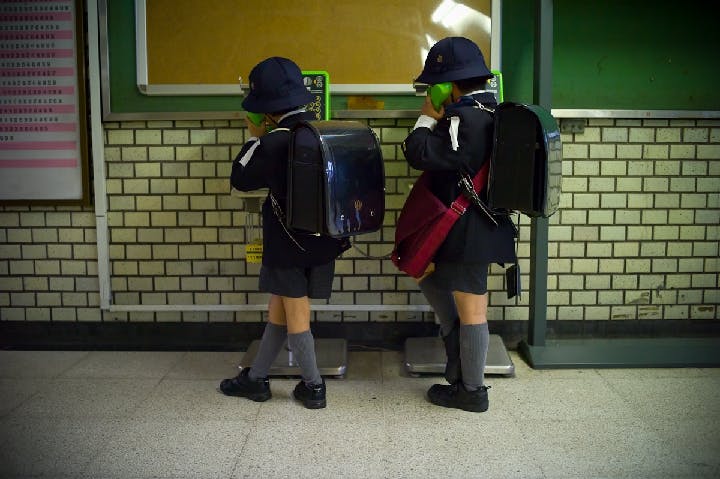The mystery behind Japan’s high suicide rates among kids
– Stephanie Lu
As the suicide rate surges among Japanese schoolchildren, no one is able to offer a clear solution to the alarming phenomenon.
To Western ears, the date of September 1 sounds benign. In Japan, however, it carries a mournful burden. It’s the date that many of Japan’s schools reopen after summer vacation. It’s also the day that Japanese children are most likely to kill themselves.
A recent study published by Japan’s Cabinet Office examined the country’s more than 18,000 child suicides from 1972–2013 and found that 131 of those suicides occurred on September 1 — 32 more suicides than the next most-frequent date of death. Mapping for frequency, the study found distinctly larger numbers of suicides at the end of August and beginning of September, as well as during the middle of April. The former coincides with schools reopening after summer vacation; the latter, as schools reopen after spring break.
The numbers are glaring. Japan’s overall suicide rate is roughly 60 percent higher than the global average, a 2014 World Health Organization report noted. In 2014 alone, 25,000 Japanese people took their own lives — roughly 70 suicides every day. Last year, suicide was the leading cause of death for Japanese children between the ages of 10 and 19. Among teens and young adults ages 10–24, there are roughly 4,600 suicide deaths in each year, and another 157,000 instances of hospitalization for self-inflicted injuries.
Suicide has a different role in Japan’s cultural heritage than it does in the West. For centuries, seppuku, a form of ritual suicide, was enshrined in Japan’s samurai code as a way for the famed warriors to avoid capture and retain some semblance of chivalry when shame or guilt was meted. Such was the cultural touchstone that could give rise to kamikaze pilots during World War II. Unlike in Western nations, where Christian doctrine has declared suicide a sin since St. Augustine wrote City of God in the fifth century, in Japan suicide is seen “as a way of taking responsibility,” in the words of Wataru Nishida, a psychologist at Tokyo’s Temple University.
That helps to explain the overall society’s high suicide rate. But even as the suicide rate for Japan’s general population has declined, it has still increased among Japan’s school-aged population. According to research by Hokkaido University professor Kenzo Denda, 1 in 12 Japanese elementary school-aged children, and 1 in 4 junior high school students suffer from clinical depression.
Some officials theorize that school-related problems, such as bullying, contribute to the country’s youth suicide crisis. For the victims of bullying, the return to school after a long vacation break can be wrenching. After gathering suicide notes from cases in 2006, police noticed a drastic increase in the number of students who blame overarching school pressures as the primary source of their problems. These school-related problems affect children of all ages more or less equally, whether those students were in elementary school or high school.
Additionally, the dynamic of collective thinking — the centripetal force of Japan’s society, wherein individual identity is sacrificed for the functioning benefit of a greater collective — results in the stigmatization of uniqueness, effectively placing a target on students who don’t fit in one way or another. As child psychiatrist Dr. Ken Takaoka explained to CNN, schools prioritize this collectivism, and “children who do not get along in a group will suffer.”
Other overarching cultural trends, like hikikomori, a form of social withdrawal, augment the problem further. Hikikomori causes some to feel isolated and as though they lack access to resources to vent. Lacking an outlet, students believe that they are not allowed to complain, and instead internalize their problems rather than seek help. Consequently, they have difficulty expressing emotions like anger and depression, which prevents those emotions from being processed in a healthy way, while concealing mental health issues from the outside world.
Even the basics of Japan’s mental health system are profoundly underdeveloped. The BBC has reported that Japan, already short on psychiatrists, suffers even more because the country’s psychiatrists rarely coordinate with clinical psychologists, and the country does not offer any government-mandated training programs for clinical psychologists to earn official certification.
In an attempt to curb the youth suicide problem, Japanese officials have tried to open up a public discussion about mental health, but thus far, these attempts have fallen short. NGOs have contributed to the effort, with similarly lackluster results. Futoko Shimbun, a Japanese nonprofit organization, encourages students who are victims of bullying to stay home from school — a rather misguided effort indicative of a deep cultural discomfort with mental health issues.
While Japan faces abnormally high rates, the issue of youth suicide is not foreign to other nations. According to a 2014 United Nations report, a suicide is committed somewhere in the world once every forty seconds, accumulating to more than 800,000 suicides each year. According to the World Health Organization, suicides make up 15 percent of all violent deaths globally, meaning suicides amount to five times as many violent deaths each year than all the violent deaths in war.
For Japan, as any nation, there is no easy answer to reducing suicide. The Japanese government aims to reduce the country’s suicide rate by twenty percent by the year 2025, but it remains unclear how exactly it plans to make that happen.
* * *
Further reading:
Elizabeth Whitman, “Japan School Children Suicides: After Vacation, Many Young Students Kill Themselves, Study Finds,” International Business Times, August 19, 2015
Rupert Wingfield-Hayes, “Why does Japan have such a high suicide rate?” BBC News, July 3, 2015
“Child suicides tend to occur at end spring or summer school holidays: study,” The Japan Times, August 19, 2015
Photo courtesy of Jeff Laitila
